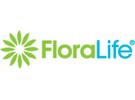Ethylene is a gas that acts as a phytohormone that regulates the ripening and senescence of most of the horticultural fresh products. In flowers, the exposure of endogenous and/or exogeneous ethylene accelerates the symptoms of senescence. The sensitivity of flowers to ethylene varies depending on the species and cultivar. However, the most commercially important cut flowers such as roses, carnations and alstroemerias have a high degree of sensitivity. Therefore, a management of ethylene effect should be considered to maintain the quality of flower stems during postharvest. Ethylene action in plants is dependent on binding of the ethylene molecule to receptors located in plant cells. The chemical 1-methylcyclopropene (1-MCP) blocks the plant ethylene receptors, therefore blocking the ethylene action. The active ingredient of EthylBloc™ is 1-MCP. However, the plant can synthetize new receptors and the efficacy of the treatment can decrease during the transport and storage phase. Repeated treatments are therefore useful to prevent ethylene effects.
Research
The treatments were as follows:
T1: No anti-ethylene treatment (control)
T2: EthylBloc™ 1.25 g sachet at farm level (EB 1,25g) as a single 1-MCP application.
T3: Brand A anti-ethylene sheet product as a single 1-MCP application.
T4: EthylBloc™ 1.25 g sachet at farm level followed by EthylBloc™ Truck Kit treatment (EB 1,25g + TK) as a continuous 1-MCP application.

Roses cv. Freedom and Hot Explorer were used for this experiment. Flowers were harvested from a local farm in the Savanah of Bogotá (Colombia), and immediately transported to the local FloraLife flower lab located in Funza (Colombia). Flowers were hydrated using FloraLife® HydraFlor Clear Ultra (1mL L-1) for 12 hours. After hydration, bouquets composed by 4 stems of each floral variety were made and each bouquet was covered with a sleeve. A total of 4 boxes were packed with 3 bouquets each, one box per treatment. For this experiment, boxes with 103 x 30 x14 cm dimensions were used. One sachet or one sheet was put into the boxes according to the treatments described above. Then the boxes were immediately closed and sealed. The boxes were kept at room temperature (20°C) for 24h. They were then stored in a cold room (3°C) for 6 days. After this time, flowers were taken out of the cold room and treatment 4 was placed in a 1 m3 chamber and treated for 24 hours with the truck kit treatment with the appropriate dose for the volume. The flowers were then stored at 3°C for 1 day. Afterwards, flowers were taken out of the cold room, put in vases, and treated with ethylene 1 ppm for 24h to simulate high ethylene environment the flowers could get exposed to during the postharvest chain. At the end of the treatment, flowers were placed on tables for the vase life evaluation.

Conclusions
- The continuous treatment of 1-MCP (in farm and on truck) better protected the roses against the ethylene action when compared to the single 1-MCP treatment in farm or truck. The above may be due to the coverage of the new receptor sites synthetized by the plant during the storage and transport.
- The data shows a reduction of botrytis incidence in 1-MCP treated flowers.
For more information: FloraLife
FloraLife
www.floralife.com
